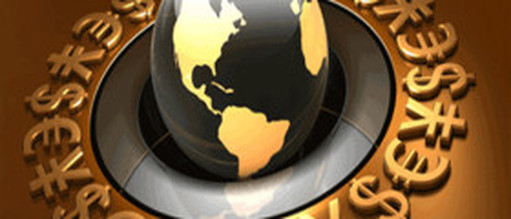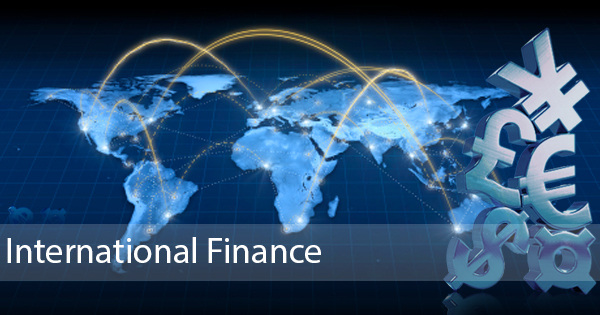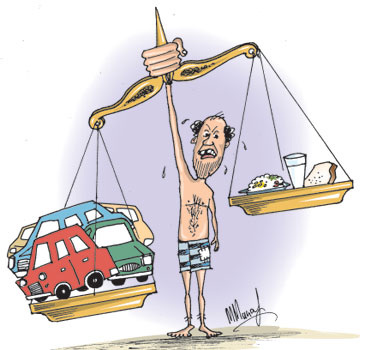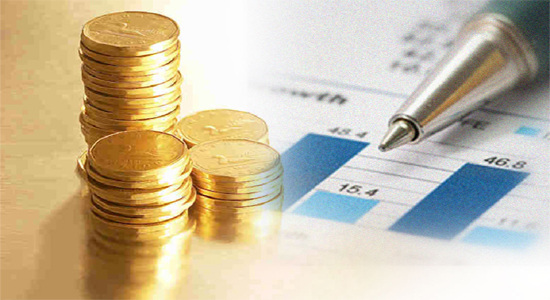The Federal Reserve System, often called simply the Fed, has 12 regional Federal Reserve Banks. Each bank is responsible for a Federal Reserve District. Most large commercial banks belong to the system. They use the Reserve Bank in their district much as people use a bank in their community. Each member bank must keep a certain sum of money either as currency in its vaults or as deposits at its Reserve Bank. This sum is a percentage of the member bank’s own deposits and is called a reserve requirement. The reserve requirement is set by the Federal Reserve. A bank may withdraw any excess deposits at the Reserve Bank to get currency when needed. It may also borrow from the Reserve Bank. The Federal Reserve has the authority to set reserve requirements for all deposit-taking institutions.
The Federal Reserve influences the economy largely by affecting interest rates. It works to control these rates in several ways. It may raise or lower reserve requirements. Or the Federal Reserve may raise or lower the discount rate, which is the interest rate commercial banks pay to borrow from Reserve Banks. Raising the reserve requirement or the discount rate lowers the ability of banks to make loans and thus tends to raise interest rates and shrink the money supply. Lowering the reserve requirement or the discount rate tends to have the opposite effect on interest rates and the money supply.
However, the Federal Reserve controls interest rates chiefly by buying and selling government securities. These activities are called open-market operations. If the Federal Reserve wants to reduce interest rates, it makes an open-market purchase. It buys government securities from banks and other businesses and from individuals. The Federal Reserve pays for the securities with a check. The sellers now have more money than before, and the amount of money in the economy has increased, banks have more money to lend than before, and they lower their interest rates. When the sellers deposit the checks at their bank, interest rates may fall—and the supply of money may increase-further. To reduce interest rates, the Federal Reserve sells securities in an open-market sale. The money supply tends to shrink as a result.
Efforts to stabilize the economy by focusing on either interest rates or on the money supply may be ineffective because changes in these factors do not affect the economy immediately. If the effect of a change is long delayed, it may strike the economy at the wrong time. For example, the Federal Reserve might have decided to increase the money supply in the hope of reducing joblessness within six months. However, the drop in unemployment might have happened at a time when unemployment had already begun to fall for other reasons. Instead of reducing joblessness, the Federal Reserve’s action might then have only fueled inflation.
The Federal Reserve’s task is also difficult because it is likely to increase unemployment when it tries to reduce inflation, and vice versa. If the Federal Reserve fights inflations by increasing interest rates, and thus reducing the money supply, employers may cut back on production and more workers will lose their jobs. If the Federal Reserve reduces interest rates to create more jobs, price increases may follow. In such cases, the Federal Reserve may have difficulty deciding what to do. Some economist believes that the best way to fight inflation and unemployment is by a gradual, continuous increase in the money supply.
The Federal Reserve influences the economy largely by affecting interest rates. It works to control these rates in several ways. It may raise or lower reserve requirements. Or the Federal Reserve may raise or lower the discount rate, which is the interest rate commercial banks pay to borrow from Reserve Banks. Raising the reserve requirement or the discount rate lowers the ability of banks to make loans and thus tends to raise interest rates and shrink the money supply. Lowering the reserve requirement or the discount rate tends to have the opposite effect on interest rates and the money supply.
However, the Federal Reserve controls interest rates chiefly by buying and selling government securities. These activities are called open-market operations. If the Federal Reserve wants to reduce interest rates, it makes an open-market purchase. It buys government securities from banks and other businesses and from individuals. The Federal Reserve pays for the securities with a check. The sellers now have more money than before, and the amount of money in the economy has increased, banks have more money to lend than before, and they lower their interest rates. When the sellers deposit the checks at their bank, interest rates may fall—and the supply of money may increase-further. To reduce interest rates, the Federal Reserve sells securities in an open-market sale. The money supply tends to shrink as a result.
Efforts to stabilize the economy by focusing on either interest rates or on the money supply may be ineffective because changes in these factors do not affect the economy immediately. If the effect of a change is long delayed, it may strike the economy at the wrong time. For example, the Federal Reserve might have decided to increase the money supply in the hope of reducing joblessness within six months. However, the drop in unemployment might have happened at a time when unemployment had already begun to fall for other reasons. Instead of reducing joblessness, the Federal Reserve’s action might then have only fueled inflation.
The Federal Reserve’s task is also difficult because it is likely to increase unemployment when it tries to reduce inflation, and vice versa. If the Federal Reserve fights inflations by increasing interest rates, and thus reducing the money supply, employers may cut back on production and more workers will lose their jobs. If the Federal Reserve reduces interest rates to create more jobs, price increases may follow. In such cases, the Federal Reserve may have difficulty deciding what to do. Some economist believes that the best way to fight inflation and unemployment is by a gradual, continuous increase in the money supply.




 RSS Feed
RSS Feed